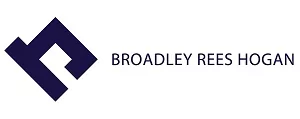In the past two e-alerts we have referred to the concept of Net Tangible Assets (NTAs), but what are they and why are they relevant?
In this e-alert, we will explore what NTAs are and why they are relevant to your business.
So what are NTAs?
NTAs are calculated using the following formula (from the Queensland Building and Construction Commission's Minimum Financial Requirements Policy (Policy)):
NTA = Assets – Liabilities – Intangible Assets – Disallowed Assets
Each of these terms is defined in the Policy.
What is the impact of NTAs?
NTAs are significant because an entity's NTAs are used to calculate an entity's Maximum Revenue ie the maximum amount of revenue that an entity is entitled to earn in a financial year (whether from construction related activities or not).
Put simply, the more revenue an entity wishes to earn, the more NTAs it will need to possess.
Seems simple, so what are the traps?
Firstly, working out an entity's NTAs can be a tricky exercise. In our experience, people sometimes overvalue their assets or cannot substantiate the values which they have ascribed to different assets. Sometimes, people (who have not obtained proper financial/legal advice) will mistakenly include 'disallowed assets' (such as jet skis and collectables) in their NTAs . In some cases, it may not immediately be clear how a potential asset or liability is to be treated, for example, trust assets are Disallowed Assets. Thus, if a business is run through a trust with a corporate trustee, who actually owns the tools that are used in the business the tradesperson, the corporate trustee or the trust?
Entities should obtain appropriate financial and legal advice when it comes to calculating an entity's NTAs.
Secondly, it is a requirement of the Policy that an entity's NTAs do not decrease by more than 30% from the last financial year unless the entity advises the Queensland Building and Construction Commission (Commission) of this fact within 30 days of the decrease occurring. The failure to notify the Commission represents a breach of a condition of entity's licence, which can lead to suspension or cancellation of the licence (and/or other forms of disciplinary action).
Only constant financial monitoring will ensure that an entity is able to identify and report any decrease in its NTAs position in a timely way. This is especially so where an entity's NTAs are being bolstered by a Deed of Covenant and Assurance, because a convenantor may only assure an amount which is based on their own Net Real Unencumbered Assets (effectively this requires an assessment of the convenantor's personal NTAs).
Thirdly, a reduction in an entity's NTAs will lead to a reduction in its Maximum Revenue (and thus the amount of work which an entity can perform).
Practical matters
Often we find that 'southern' construction companies who wish to enter the Queensland market struggle to marshall sufficient NTAs in order to cover their 'Australia-wide' revenue. As such, it is common for such companies to incorporate a 'Queensland only' entity which limits their revenue (in turn requiring less NTAs than might be case if they were trading through an 'Australia-wide' entity).

